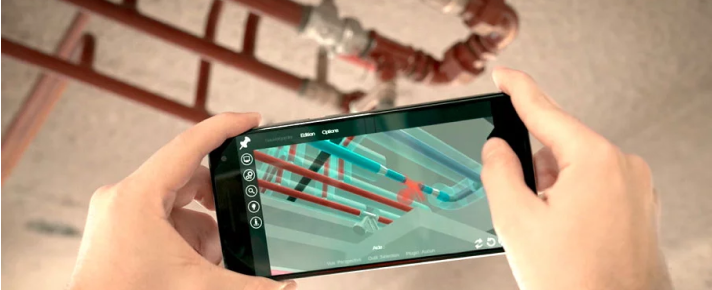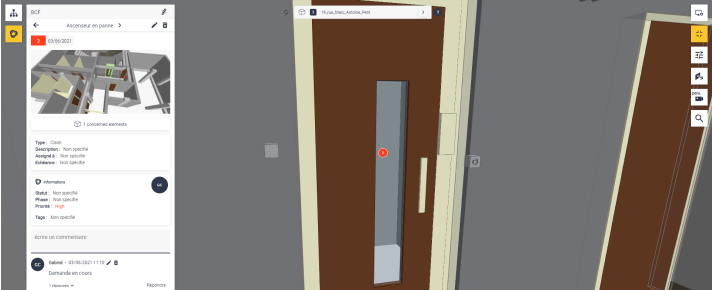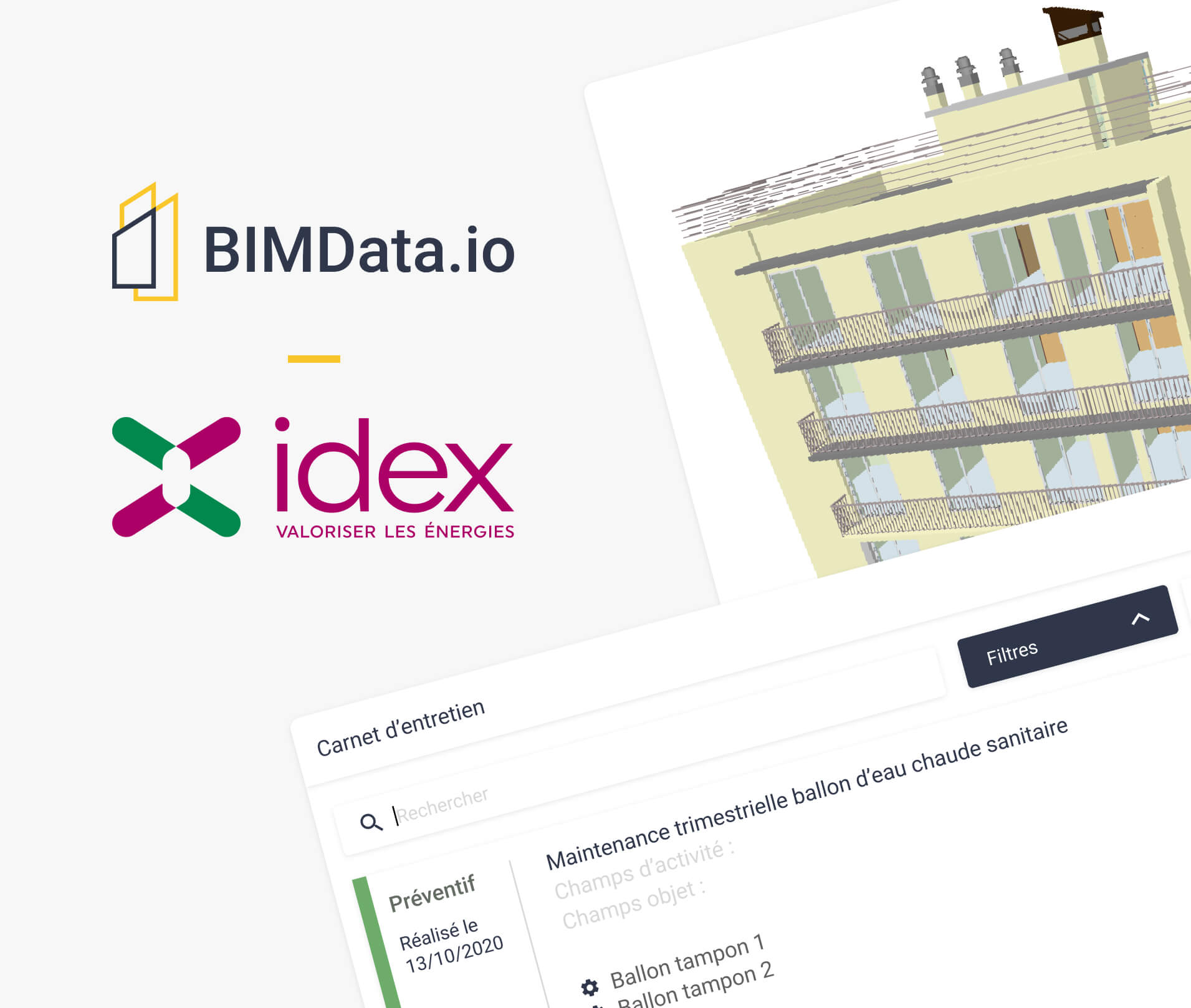BIM is a digital collaboration method that enables the management of all of the data for a building and the associated infrastructures, across their entire lifecycle (design, construction, management). Here we are looking at a building’s maintenance phase. Software-assisted management methods aimed at maintenance services (CMMS) and the monitoring of equipment (Building Management Systems) prove more effective if accompanied by BIM.
Here are 4 good reasons to adopt BIM within the CMMS.
1/ BIM’s raison d’être: the convergence of data
BIM allows you to integrate a common benchmark into the CMMS, shared between the various systems that comprise, as a minimum requirement, the equipment and the spatial structure (site / floors / rooms / zones). Users, maintenance engineers, and managers are therefore all speaking the same language. What’s more, all of the technical and functional characteristics of a piece of equipment are transcribed within BIM objects. This is a source of information that is vital to preventive or curative maintenance, in the sense that BIM allows you to link maintenance task lists with service orders and regulatory controls… BIM modelling, coupled with the CMMS, has a major role to play in the creation of a digital twin. By offering a spatial benchmark in which to consult, share, input, and localise the technical information for a building, BIM enables the Facility Manager to intervene more quickly and more precisely when carrying out any maintenance operation. The operator will thus be able to directly identify within the model the location of and information relating to a machine (technical specifications, associated intervention history etc.), and to decide as to which actions should be carried out in order to ensure its proper function or verify that regulatory checks have been properly performed. Simple and fast sharing of your geolocation is also possible thanks to BIM.
2/ A library of objects with which to integrate a digital final implementation file
It is possible to download data and certified BIM objects from a BIM content platform. You can access quality 3D or 2D BIM objects, in formats as varied as .rfa, .skp, .ifc, etc. By facilitating the sharing of all types of BIM object, one can ensure optimal use in any professional software application, while also ensuring the complete integration of the data from the final implementation file. The management of BIM data allows you to make the data of the final implementation file more reliable and precise. By utilising BIM right from the project launch, the final implementation file can be created and updated, automatically and in real time, based on the progress of the project. Project managers can thus make their project data more reliable thanks to BIM, and in so doing avoid the sharing of inaccurate data. The modelling of a project, along with the incorporation of all data in digital form, aims to improve the knowledge of the building, so as to reduce the building’s maintenance costs.3/ Augmented reality
BIM allows you to work with several technologies. Augmented reality involves superimposing contextual digital information onto the real world, on the screen of a tablet or smartphone. Through these different media, the operator can access various pieces of information very quickly, such as the maintenance history or the documentation for the equipment he is looking at. During the on-site quality control phase, it is thus possible to make elements appear in 3D, which would otherwise be impossible to see. The facility management of tomorrow already offers an augmented reality experience: the operator is directed to his intervention location using a touchscreen table, which allows him to visualise all of the systems that are concealed within the suspended ceilings of the corridors. For example, this can help you find the source of a leak coming from enclosed pipes.
4/ Better communication between the various players, via BCF
The last good reason to adopt BIM within the CMMS is the BCF (BIM Collaboration Format). It provides an effective response to the need to comment, discuss, or submit issues regarding the model. Previously, the only way to respond to this need was to submit non-contextualised and non-structured issues to the various intervening parties. BCF format allows you to link the model to the subject of discussion and to transfer only targeted, essential information: selection of a section of the model, camera data (point of view), selection of objects, comments etc. All BCF files are recorded with a unique ID, making it simpler to track intervention requests, and in particular to know the number of unresolved service orders, who is responsible for the monitoring, and the resolution details (date, issues, photos…). BCF is a universal language, shared between architects, economists, companies performing on-site interventions, and the facility manager. Find out more about open BIM
Do you have questions regarding BIMData or BIM within the CMMS?
Contact us

